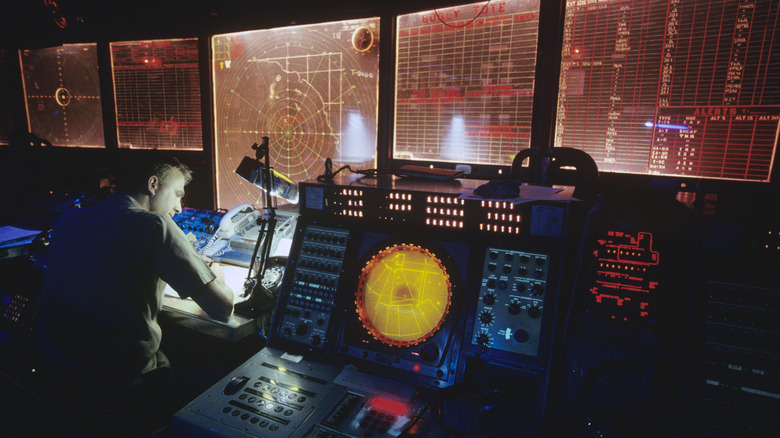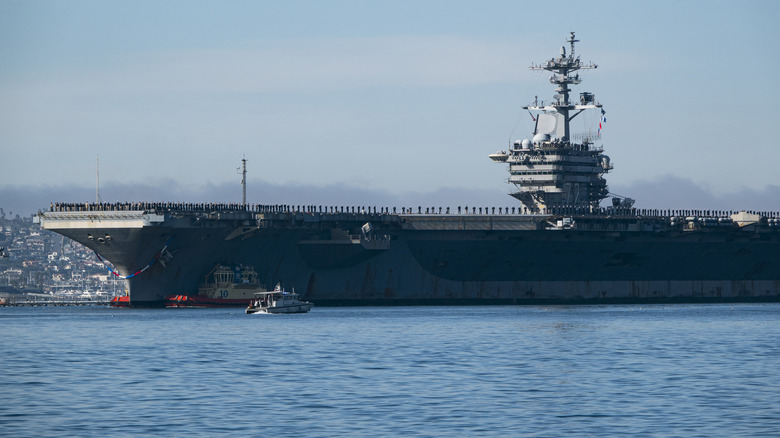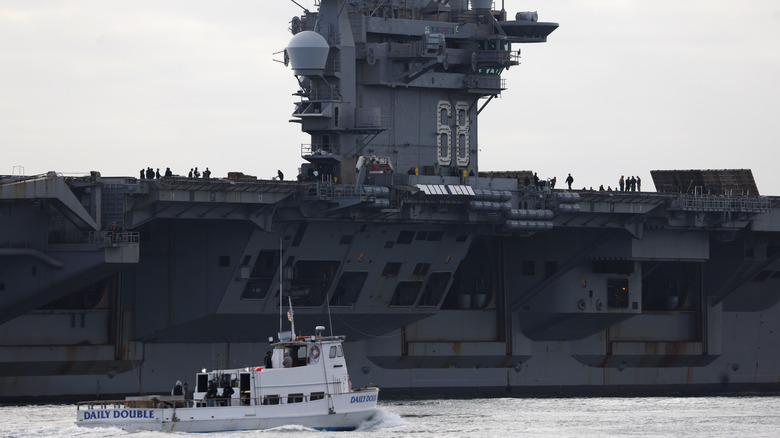Do Navy Ships Have Wi-Fi On Board? Security Concerns, Explained
The U.S. Navy has always been one of the world's most sophisticated armed forces. With its top-of-the-line equipment and ships — including the USS Gerald R. Ford (CVN 78), the largest, most advanced aircraft carrier worldwide — the Navy spares no expense when it comes to the technology housed in its vessels.
However, recent questions have arisen about Wi-Fi — or the lack of it — in the Navy's ships. It has come to light that, despite how advanced they are, they may not have Wi-Fi networks for their crew members. In today's world, where many consider the internet a basic need, it might sound preposterous that those serving with the Navy may be required to go months on end without accessing the internet via Wi-Fi. So do these mighty vessels come with networks?
Well, some Navy ships do have Wi-Fi onboard. But the situation is more complex than you might think.
It's all about security
The U.S. Navy swam to life in 1775, promising to guard America and its waters against any forces that would wish it harm. Some 250 years later, the Navy is still working to ensure freedom, safety, and prosperity for all Americans. But neither ships' visitors nor those in the Navy's service usually have access to Wi-Fi for personal needs, as evidenced by a 2023 incident aboard the littoral combat ship USS Manchester, where Navy chiefs conspired to install an illegal Wi-Fi network for their recreational use.
This incident might sound odd to those unfamiliar with the risks the Navy faces on a daily basis. But having such networks on ships can pose serious security concerns, as the Navy stated in its investigation of the USS Manchester's situation. These issues include network overload, where Wi-Fi networks consume bandwidth meant for missions, thereby hampering communications; network breaches, where external parties can launch cyberattacks through Wi-Fi networks and take control of the ship or gain access to mission-critical systems; and information security, where the sailors' privacy can be compromised by these malevolent actors.
Given the risks involved in including Wi-Fi networks on these vessels, another question arises. Why is the Navy eager to have them installed?
Improving the overall quality of life for sailors
The Navy goes all out when it comes to its equipment. This can be seen in some of its vessels, such as the Navy SEALs' Combatant Craft Assault boat, which is among the fastest Navy ships ranked by top speed. In fact, technology is constantly transforming the military. And in recent years, concerned about sailors' mental health, the Navy has been applying this same thorough approach to improving day-to-day life on its ships — which is why it is installing Wi-Fi networks for sailors' personal use.
In 2012, the Navy started fitting its ships with 4G LTE networks, and throughout the 2020s, it has been investigating ways to further improve Wi-Fi connectivity in its watercraft. It is already equipping vessels such as the aircraft carrier John S. Stennis' berthing barge, with high-speed Wi-Fi for its sailors. In early 2024, it also launched a Wi-Fi pilot program that saw it equip bases and centers, such as Naval Station Norfolk and Naval Medical Center Portsmouth, with free and paid Wi-Fi access.
The free version, which has a few websites filtered for obvious reasons, includes 30 megabits per second for download speeds and five megabits per second for upload speeds. The paid versions are faster, with speeds for the unfiltered version reaching 100 megabits per second for downloads and 10 megabits per second for uploads at $79.95 a month. The paid filtered version has the same speeds and goes for $30 a month.


